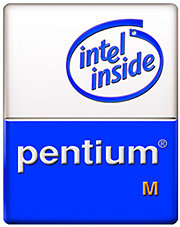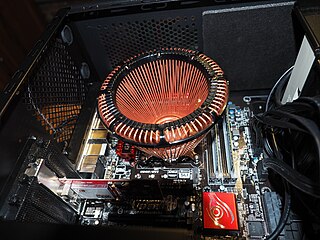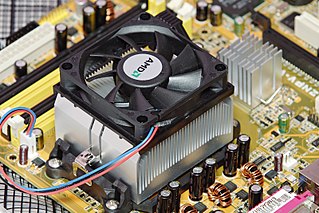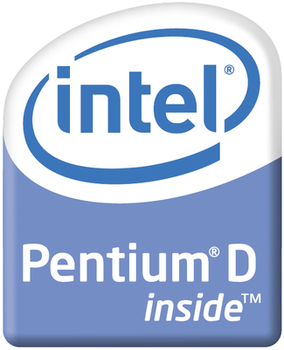
In computing, overclocking is the practice of increasing the clock rate of a computer to exceed that certified by the manufacturer. Commonly, operating voltage is also increased to maintain a component's operational stability at accelerated speeds. Semiconductor devices operated at higher frequencies and voltages increase power consumption and heat. An overclocked device may be unreliable or fail completely if the additional heat load is not removed or power delivery components cannot meet increased power demands. Many device warranties state that overclocking or over-specification voids any warranty, however there are an increasing number of manufacturers that will allow overclocking as long as performed (relatively) safely.

A front-side bus (FSB) is a computer communication interface (bus) that was often used in Intel-chip-based computers during the 1990s and 2000s. The EV6 bus served the same function for competing AMD CPUs. Both typically carry data between the central processing unit (CPU) and a memory controller hub, known as the northbridge.

The Pentium M is a family of mobile 32-bit single-core x86 microprocessors introduced in March 2003 and forming a part of the Intel Carmel notebook platform under the then new Centrino brand. The Pentium M processors had a maximum thermal design power (TDP) of 5–27 W depending on the model, and were intended for use in laptops. They evolved from the core of the last Pentium III–branded CPU by adding the front-side bus (FSB) interface of Pentium 4, an improved instruction decoding and issuing front end, improved branch prediction, SSE2 support, and a much larger cache. The first Pentium M–branded CPU, code-named Banias, was followed by Dothan. The Pentium M line was removed from the official price lists in July 2009, when the Pentium M-branded processors were succeeded by the Core-branded dual-core mobile Yonah CPU with a modified microarchitecture. It replaced the Mobile Pentium 4 processor, which suffered from power consumption and heat problems.
Processor power dissipation or processing unit power dissipation is the process in which computer processors consume electrical energy, and dissipate this energy in the form of heat due to the resistance in the electronic circuits.
In computing, the clock rate or clock speed typically refers to the frequency at which the clock generator of a processor can generate pulses, which are used to synchronize the operations of its components, and is used as an indicator of the processor's speed. It is measured in the SI unit of frequency hertz (Hz).

A quiet, silent or fanless PC is a personal computer that makes very little or no noise. Common uses for quiet PCs include video editing, sound mixing and home theater PCs, but noise reduction techniques can also be used to greatly reduce the noise from servers. There is currently no standard definition for a "quiet PC", and the term is generally not used in a business context, but by individuals and the businesses catering to them.
Power management is a feature of some electrical appliances, especially copiers, computers, computer CPUs, computer GPUs and computer peripherals such as monitors and printers, that turns off the power or switches the system to a low-power state when inactive. In computing this is known as PC power management and is built around a standard called ACPI, this supersedes APM. All recent computers have ACPI support.

In computing, a northbridge is one of two chips comprising the core logic chipset architecture on a PC motherboard. A northbridge is connected directly to a CPU via the front-side bus (FSB) to handle high-performance tasks, and is usually used in conjunction with a slower southbridge to manage communication between the CPU and other parts of the motherboard. Since the 2010s, die shrink and improved transistor density have allowed for increasing chipset integration, and the functions performed by northbridges are now often incorporated into other components. As of 2019, Intel and AMD had both released chipsets in which all northbridge functions had been integrated into the CPU. Modern Intel Core processors have the northbridge integrated on the CPU die, where it is known as the uncore or system agent.

Computer cooling is required to remove the waste heat produced by computer components, to keep components within permissible operating temperature limits. Components that are susceptible to temporary malfunction or permanent failure if overheated include integrated circuits such as central processing units (CPUs), chipsets, graphics cards, and hard disk drives.
The thermal design power (TDP), sometimes called thermal design point, is the maximum amount of heat generated by a computer chip or component that the cooling system in a computer is designed to dissipate under any workload.

Pentium D is a range of desktop 64-bit x86-64 processors based on the NetBurst microarchitecture, which is the dual-core variant of the Pentium 4 manufactured by Intel. Each CPU comprised two dies, each containing a single core, residing next to each other on a multi-chip module package. The brand's first processor, codenamed Smithfield and manufactured on the 90 nm process, was released on May 25, 2005, followed by the 65 nm Presler nine months later.
AMD Cool'n'Quiet is a CPU dynamic frequency scaling and power saving technology introduced by AMD with its Athlon XP processor line. It works by reducing the processor's clock rate and voltage when the processor is idle. The aim of this technology is to reduce overall power consumption and lower heat generation, allowing for slower cooling fan operation. The objectives of cooler and quieter result in the name Cool'n'Quiet. The technology is similar to Intel's SpeedStep and AMD's own PowerNow!, which were developed with the aim of increasing laptop battery life by reducing power consumption.
The CPU core voltage (VCORE) is the power supply voltage supplied to the CPU, GPU, or other device containing a processing core. The amount of power a CPU uses, and thus the amount of heat it dissipates, is the product of this voltage and the current it draws. In modern CPUs, which are CMOS circuits, the current is almost proportional to the clock speed, the CPU drawing almost no current between clock cycles.
Enhanced SpeedStep is a series of dynamic frequency scaling technologies built into some Intel microprocessors that allow the clock speed of the processor to be dynamically changed by software. This allows the processor to meet the instantaneous performance needs of the operation being performed, while minimizing power draw and heat generation. EIST was introduced in several Prescott 6 series in the first quarter of 2005, namely the Pentium 4 660. Intel Speed Shift Technology (SST) was introduced in Intel Skylake Processor.
The Intel Core microarchitecture is a multi-core processor microarchitecture launched by Intel in mid-2006. It is a major evolution over the Yonah, the previous iteration of the P6 microarchitecture series which started in 1995 with Pentium Pro. It also replaced the NetBurst microarchitecture, which suffered from high power consumption and heat intensity due to an inefficient pipeline designed for high clock rate. In early 2004 the new version of NetBurst (Prescott) needed very high power to reach the clocks it needed for competitive performance, making it unsuitable for the shift to dual/multi-core CPUs. On May 7, 2004 Intel confirmed the cancellation of the next NetBurst. Intel had been developing Merom, the 64-bit evolution of the Pentium M, since 2001, and decided to expand it to all market segments, replacing NetBurst in desktop computers and servers. It inherited from Pentium M the choice of a short and efficient pipeline, delivering superior performance despite not reaching the high clocks of NetBurst.
Yonah was the code name of Intel's first generation 65 nm process CPU cores, based on cores of the earlier Banias / Dothan Pentium M microarchitecture. Yonah CPU cores were used within Intel's Core Solo and Core Duo mobile microprocessor products. SIMD performance on Yonah improved through the addition of SSE3 instructions and improvements to SSE and SSE2 implementations; integer performance decreased slightly due to higher latency cache. Additionally, Yonah included support for the NX bit.
Dynamic frequency scaling is a power management technique in computer architecture whereby the frequency of a microprocessor can be automatically adjusted "on the fly" depending on the actual needs, to conserve power and reduce the amount of heat generated by the chip. Dynamic frequency scaling helps preserve battery on mobile devices and decrease cooling cost and noise on quiet computing settings, or can be useful as a security measure for overheated systems.
Dynamic voltage scaling is a power management technique in computer architecture, where the voltage used in a component is increased or decreased, depending upon circumstances. Dynamic voltage scaling to increase voltage is known as overvolting; dynamic voltage scaling to decrease voltage is known as undervolting. Undervolting is done in order to conserve power, particularly in laptops and other mobile devices, where energy comes from a battery and thus is limited, or in rare cases, to increase reliability. Overvolting is done in order to support higher frequencies for performance.
Low-power electronics are electronics, such as notebook processors, that have been designed to use less electric power than usual, often at some expense. In the case of notebook processors, this expense is processing power; notebook processors usually consume less power than their desktop counterparts, at the expense of lower processing power.
AMD Turbo Core a.k.a. AMD Core Performance Boost (CPB) is a dynamic frequency scaling technology implemented by AMD that allows the processor to dynamically adjust and control the processor operating frequency in certain versions of its processors which allows for increased performance when needed while maintaining lower power and thermal parameters during normal operation. AMD Turbo Core technology has been implemented beginning with the Phenom II X6 microprocessors based on the AMD K10 microarchitecture. AMD Turbo Core is available with some AMD A-Series accelerated processing units.







